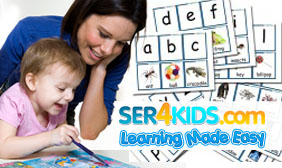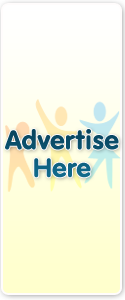A child with Dyslexia in the Classroom

Having a child in the classroom with dyslexia can be daunting if, as a teacher you are not prepared, or understand the individual special needs of the child. It is important to put in place simple strategies that will not only assist the child to learn but feel accepted in the workplace environment also.
Reading is at the foundation of many other subjects of learning at school and a child who finds the task of literacy skills difficult can often fall behind not only in English subjects but in others too. This can result in low self esteem and confidence, withdrawal behaviour and possibly social rejection from peers.
It is important a class teacher with a child with dyslexia (or any learning difficulty for that matter) feels accepted and catered for, without made to be felt different. If a class teacher understands the needs of the child with dyslexia and seeks the appropriate assistance while providing a healthy learning environment then there is no reason why the child with special needs should not experience success and self worth.
There are many aspects a teacher should be aware of that attribute to a child with dyslexia’s difficulty to learn. For example, the difficulty to remember alphabet sounds when spelling a word, while trying to write the letters in the correct sequence, while also retaining the sentence that the word was being used in. A child with dyslexia usually has poor auditory processing skills and needs to spend time with a language therapist in developing it. So in order to assist and make information more segmented into pieces to help them remember here is a few strategies that can be implemented within the classroom:
- Routines will assist a child with dyslexia develop independent learning. But providing an outline of the daily activities and lessons will give more meaning to the tasks and be processed better. Providing a written list that is colour coded which can also be a great visual prompt for them to relay their daily activities when talking to parents at home.
- All communication & instructions should be written down. Homework tasks, items required from home for class etc. Keeping them together with any school notes is also a good way to help your child with dyslexia stay organised and prepared for school.
- Place the child’s desk close to a supportive class friend and you as the teacher, to keep an eye on when you need to step in and give assistance.
- Like their lists colour code any work to be copied off the whiteboard or chalkboard. It will help a child with dyslexia see between the different lines of text to be copied. Keep the lines well spaced and if they have a poor visual memory keep copying to a minimum and provide handout worksheets to ‘fill in the blanks’ instead.
- A child with dyslexia may not be able to stay focused on tasks as long as their peers due to the need to concentrate on tasks more so be aware of the level of work delivered or sent home at the end of the day as homework eg if peers have 5 sentences to write using their spelling words consider a child with dyslexia to only write 3.
- Consider a reading program that will allow repetition to introduce new vocabulary and not just
 the one off book per sight word. By providing repetitive experiences such as following an audio recording of a story, not only will it help strengthen their memory of identifying the word and it’s meaning but also increase their motivation to read more due to the confidence in reading independently.
the one off book per sight word. By providing repetitive experiences such as following an audio recording of a story, not only will it help strengthen their memory of identifying the word and it’s meaning but also increase their motivation to read more due to the confidence in reading independently. - Avoid ‘read aloud’ group activities, instead consider alternative more motivating and smaller group activities such as word/image memory or domino games. Even snap. This can also be turned into bingo games to comprehend and read sentences aloud in small groups.
- Spelling and writing tasks may need to be altered. Instead of grouping spelling lists based on vocabulary categories, such as words related to the farm. Consider delivering a list of words that are based around language or spelling rules. Children with dyslexia often find it difficult to associate the spelling of words with their environment but are better if they group words to spell based on spelling rules within the words.
- Give extra time at the end of writing tasks for children with dyslexia to edit their spelling and structure of writing. Often it is difficult for a child with dyslexia to focus on editing tasks while they concentrate on delivering the content and forming the letters in the correct sequence. They need separate the tasks in order to carry them out effectively.
- The terminology and symbols of maths can be like learning a foreign language to a child with dyslexia and plenty of time to build a strong foundation of understanding needs to be given. A simple strategy is to allow the child to write in the cover of their book symbols and the relevant language that describes those symbols – like a glossary or reference. If older they may want to use a small exercise book or address book that allows them to create their own ‘dictionary of terms’ and symbols.

- When writing sums or displaying mathematical samples on the board use different colours to highlight what it is your teaching the children, eg if it is fractions use red to draw the line and black for the numbers. Or addition, use red to highlight the plus symbol.
- Encourage the use of technology to assist a child with dyslexia. From using calculators to address large mathematical problems we wouldn’t necessarily do in our head anyway to spell check tools on a computer when doing writing tasks or voice recording instead of typing.
- If handwriting is a major ordeal reduce the level of manual handwriting tasks t only what is necessary and provide time to increase fine motor strength with interesting activities such as building with lego, painting with sticks & other alternative tools, drawing on pavements with chalk etc. These activities will help them practise learning to control their grip and position their fingers better.
- Be aware of what is achievable goals when marking written work. If it is a writing task then focus on the content of the story – not the handwriting and legibility. It is soul destroying to see a child go to a lot of effort to write a page worth of content only to have it brought home covered in red pen for not crossing t’s and dotting i’s.
You will find many of the resources created in SER4KIDS is aimed at assisting children with language disorders, such as dyslexia. The use of real images and assorted games while developing literacy and numeracy skills is a great way to provide the repetition while staying motivated to learn and develop new concepts.
Children with dyslexia can often present a lot of strengths and if a teacher is aware of them they can be utilised to motivate a child on topics they struggle with as well as build self confidence and strengthen the social acceptance from peers. Children with dyslexia often present good spatial awareness and artistic abilities. They can also display very good oral and comprehension skills.
So if a teacher is aware of observing a child with dyslexia in the classroom they will soon discover what their strengths and weaknesses are. Provide simple and practical solutions to cater for their special needs whilst improving their self esteem and confidence by providing a safe learning environment where they are accepted for who they are.

 Cart (0)
Cart (0)









Fantastic resource! Thanks so much.
Hey there! I had to tell you I’m browsing your blog from my iphone over lunch and just wanted to say I loved reading through your blog articles, particularly this one. I look forward to all your posts! Keep up the excellent work!
Yea it totally sux being dyslexic. Most people realize it in grade school though and a teacher should notice it. If picked up early then it may not be too serious a problem but if you’ve dealt with it for a while and it’s really affecting your speech then yes, it’s a problem. I have a friend who’s dyslexic and it’s just a problem she has to deal with. It isn’t curable, it’s just the way your mind works, jumbling up what the eyes see. Getting tested early will help a lot. I liked reading your article, thanks.
No one ever wants to talk about Dyslexia or the other four D’s that you mention on your blog. I like to let it be known to raise awareness for my students and the community around me.